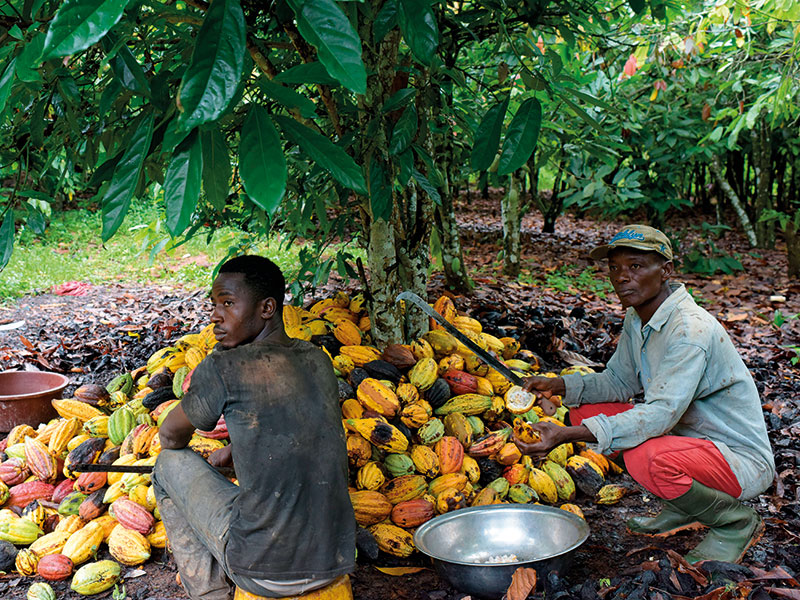Domestic gold production is projected to reach a record-breaking 4 million ounces (oz) in 2023, compared to 3.7 million ounces in 2022.
This will mark the highest production in three years, once again solidifying the country’s position as foremost gold producer on the African continent.
The Ghana Chamber of Mines (GCM) revealed that it expects full-year production from its member companies to approach 3.1 million ounces in 2023, which is similar to the output level of 3.07 million ounces achieved in 2022.
Third-quarter data reveal that production attributable to GCM member companies stood at 2.14 million ounces, slightly below the 2.18 million ounces reported during the same period in 2022.
Meanwhile, output from small-scale miners increased by 70.6 percent to 1.12 million ounces in 2023 from 0.66 million ounces in 2022.
The 2023 output is highest in the last three years, signalling a near-full recovery of the small-scale sector from disruptions caused by the withholding tax, he added.
President-GCM, Joshua Mortoti, speaking at a breakfast meeting with the Minister of Lands and Natural Resources, Samuel Jinapor, in Accra said: “The 2 percent reduction in gold output was primarily on the back of a fall in production at Gold Fields’ Damang Mine, Newmont’s Akyem Mine, AngloGold Ashanti’s Iduapriem Mine, Galliano’s Asanko Gold Mine, Adamus Resources’ Nzema Mine and Golden Star’s Wassa Mine, which displaced the growth in output of the Chamber’s other gold producing members”.
On the small-scale sector, he indicated that the increase in gold production was primarily influenced by halving the withholding tax on exports of unprocessed gold to 1.5 percent.
2023 outlook
Mr. Mortoti said output from the Chamber’s producing member companies is projected to increase to 3.5 million ounces by 2024. This increase is mainly due to fresh production from Cardinal Namdini Gold Mine, he added.
“Additional output from the mine, which is earmarked for the fourth quarter of 2024, will partially compensate for the anticipated decline in output of Newmont’s Akyem Mine and Gold Fields’ Damang Mine. The latter mines are approaching their end of life.
“With a projected output range of 1.1 million ounces to 1.3 million ounces in 2024 from the small-scale sector, domestic gold output is expected to exceed 4.5 million ounces in 2024. Regarding manganese production, the planned output for 2024 is 5 million tonnes,” he said.
However, Mr. Mortoti pointed out that several major risks could negatively impact mining production in 2024. These risks include high fiscal and regulatory costs, illegal miners encroaching on concessions of large-scale miners, and uncertainty around implementing the Gold for Oil Programme and how it will affect small-scale miners’ operations.
It emerged that due to the high turnover in mineral production, the value added by the mining sector to the economy increased significantly. As of end third-quarter 2022, the value was GH₵9.34billion, which has now increased to GH₵13.8billion as at end third-quarter 2023.
Furthermore, regarding its contribution to gross domestic product (GDP), the share of mining in GDP improved marginally from 6.5 percent at the end of third-quarter 2022 to 7.01 percent in the equivalent period of 2023.
The mining sector’s contribution to the country’s gross merchandise exports increased significantly from 35.7 percent as of August 2022 to 43.4 percent in the same period of 2023. This means the sector remained the primary source of foreign exchange earnings, surpassing proceeds from exports of crude oil and cocoa during the same period.
The share of crude oil and cocoa exports in merchandise exports stood at 22.1 percent and 14.9 percent respectively in the same period.
Furthermore, Bank of Ghana (BoG) data show the revenue generated from exports of gold was even higher than inward remittances, which is another significant source of foreign exchange for the country.
In remarks at the meeting, the minister noted that gold contributed some US$4.67billion in exports, being 43.4 percent of the country’s total exports as of August 2023, according to BoG.
He also acknowledged there have been significant investments in the construction of new mines and redevelopment of existing ones, citing the Bibiani Mine as an example.
“We are looking forward to new mines coming on-stream – including Cardinal Namdini, which has committed to pour its first gold this year; and Azumah Resources as well as Newmont Ahafo North. But we are not only concentrating on gold; we are also working to diversify our mineral resources base,” he concluded.
Source: B&FT




